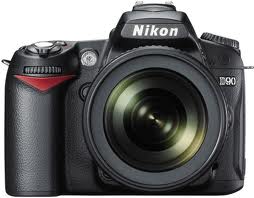Departments
Search
Follow Us
Tags
Latest Highlights
IBH
Photography Basics — The Camera
Cameras are divided into two basic types: Point and Shoot and Single Lens Reflex. These are described below. I use a Point and Shoot type made by Kodak. While it does not have all the features and versatility of the Single Lens Reflex camera, the price was right for me. When working with film, I used a single lens reflex camera with a variety of lenses. While film is still available to be used; almost all of the current cameras in use are digital so I will only address digital cameras and photography.
Point and Shoot
Description
Point and shoot cameras mean just that, point the camera at something and trip the shutter. The camera does all the work for you. Unfortunately, the camera is rarely as smart as the photographer so the results can be iffy. These cameras started out as a fixed lens that focused about 4 feet in front of the camera with a fixed aperture and shutter speed. It was basically a box with a shutter. Then the lab that developed the film did what it could to fix the exposure. Today’s Point and Shoot cameras are much more sophisticated.
The biggest drawback to Point and Shoot cameras is that many do not have a through the lens (TTL) viewfinder. This means that what you see through your viewfinder may not be what you capture on film or digital media. Point and Shoot cameras are usually small and fit into a pocket or purse. They are best used for casual picture taking where capturing the memory is more important than creating a marketable image.
Single Lens Refles Camera
These are the cameras you see many professionals and serious amateurs lugging around. These cameras have a larger body than most Point and Shoot cameras and interchangeable lenses. While Single Lens Reflexs started out a fully manual, where the photographer had to control all features including focus, most of these cameras are capable of acting in a fully automatic mode just like a Point and Shoot. Many now allow the photographer the freedom to also take control of all functions or any combination of functions. These cameras allow for great control over the photography process and allow the photographer to take images not always possible with a Point and Shoot.
Both images are of Nikon cameras. This is not an endorsement for any particular brand. As mentioned before, I use a Kodak. When considering a camera, the next usual sales point is the number of megapixels that the camera is capable of capturing. The larger the number the finer the resolution of the picture and the greater the ability to enlarge the picture.
When purchasing a camera, get the best optics that you can afford. The lens is much more important than pixels or brand or type. If you can afford it, the Single Lens Reflex camera is superior to the Point and Shoot. However, you can take very good pictures using a Point and Shoot. The next section will focus on the features that you need to take pictures of your art.
Posted by Rasmussen Gems and Jewelry LLC
Tags: buy handmade, Camera, Handmade, Handmade Harbor, onfireforhandmade, photography
Posted in Handmade, Information, Selling Tips, Spread the Love
10 Responses to “Photography Basics — The Camera”
Leave a Reply
You must be logged in to post a comment.




Thanks for this photography article, John. Your photography is stunning and I can use all the help I can get!
Great post John, looking forward to the rest of the series!
An interesting read, many thanks
Thanks John! I am looking forward to the next segment. I am lacking in photography skills, I need lots of improvement in this area.
Nancy
John, Thank you for this post! I need a lot of help with my photography skills. Looking forward to the rest of this series. Hoping to learn a lot!
Thanks John, awesome help….(smile)
Thank you John, great helpful tips here….
John, Well written article which I enjoyed reading. I also have a Kodak point and shoot and I love the simplicity and right now I have to many things on my plate than trying to learn about a new camera. LOL Thanks for sharing your insight.
Really good article! Thanks for sharing this.
Thanks John…great info !